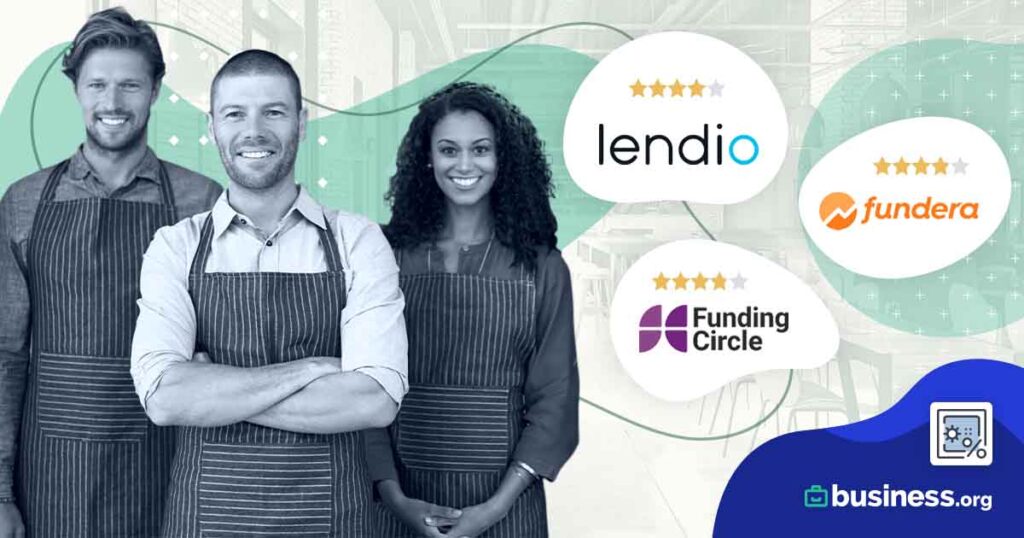We are committed to sharing unbiased reviews. Some of the links on our site are from our partners who compensate us. Read our editorial guidelines and advertising disclosure.
The Pros and Cons of Financing Your Small Business with Microloans
What is microfinancing?
Microfinance, also known as microcredit, is a broad category of financial services that provide loans, insurance, and savings to small-business owners who lack access to traditional financing services.
What are microloans?
Microloans are smaller and easier to obtain than traditional loans. In general, microloans are offered to businesses that need less than $50,000 to start up their operations.1 The SBA (U.S. Small Business Association) reports that the average microloan is $13,000.2
What are the benefits of microlending?
Do you have less than stellar credit? Microlenders tend to provide a pathway for small-business owners to build their credit score. In addition, many microlenders will guide you through the loan process and offer advice to increase your likelihood of success. Plus, microloans can take as little as 14 days to come through, whereas traditional loans backed by the SBA can take months.
What are the risks of microloans and microcredit?
As a small-business owner, it’s important to carefully weigh the risks of microfinancing. Microloans and microcredit have a few drawbacks, but the biggest is the inflated interest involved. While you’ll pay less interest than a typical credit card, you will most likely pay higher rates than if you went with a traditional bank. But a missed payment on a microloan can still hurt your credit just as much as defaulting on a conventional loan.
By signing up I agree to the Terms of Use.
Who should consider applying for a line of microcredit?
Microloans are used by start-up businesses and nonprofit organizations who need extra capital to start or expand a business. These types of loans are dedicated to serving small-business owners and anyone who has trouble getting access to credit. A growing number of companies are flocking to microfinancing options instead of traditional loans. In fact, microlenders help 250,000 to 300,000 small businesses each year.3
What are the requirements to qualify for a microloan?
Every microlender has unique requirements to determine eligibility. As we mentioned above, you don’t need a perfect credit score to qualify for a microloan. However, recent bankruptcies, outstanding tax liens, or recent delinquent payments will most likely disqualify you. You will also need to create a business blueprint that outlines your intentions. And the more professional and in-depth it is, the better odds you have of being approved.
How do I apply for a microloan?
When considering how to finance your small business, we recommend browsing SBA’s list of certified microlenders. Their online referral tool breaks lenders down according to state and provides all the necessary contact information to get you started. Once you locate a microlender, you’ll need to provide some basic information, including the following:
- Government ID
- Proof of income
- Financial statements
- Purpose of loan
- A solid business plan
- Collateral
- References
After the loan officer reviews your application and documentation, they’ll create a set of closing documents detailing the amount of the loan, interest rate, and maturity date.
Microloans vs. regular small-business loans?
When it comes to microloans and regular small-business loans, there are quite a few differences—some of which we’ve covered below.
Flexibility
Because microlenders are focused on supporting the community, they tend to be more flexible in terms of credit history and monthly payment amounts.
Financial terms
While they both have maximum limits, microloans are issued for much smaller amounts.
Personal interest
Microlenders spend more time getting to know a business owner on a personal level. To help entrepreneurs succeed, they sometimes provide consulting and training.
We’ve put together a list of seven microfinancing banks that offer different features at affordable interest rates. Check them out and let us know which one is your favorite.
The 7 best microfinancing companies
Best for established businesses: LendingClub
LendingClub connects borrowers with investors through their large online marketplace. By cutting the costs and complexities of traditional loans, borrowers will save time and money. LendingClub offers fixed monthly payments and a total annualized rate of 9.77% to 35.98%. While they offer competitive APR, their loans tend to be slightly more expensive than traditional bank loans.
Best for borrowers with low credit scores: Accion
Accion offers a variety of loans for every type of business, including woman-owned businesses and minority-owned businesses. Their small business loans range from $5,000 to $100,000, with fixed APR rates starting at 5.99%. Borrowers must demonstrate sufficient cash flow and have a credit score of at least 525. And access to funds typically takes one month.
Best for businesses that need funds quickly: Kabbage
If you need capital quickly, Kabbage is the clear winner. It not only deposits your funds quickly but also allows borrowers to withdraw funds in increments. Beyond that, Kabbage offers loan terms of six or twelve months. Although Kabbage is flexible on eligibility criteria, you must be in business for at least one year.
Best microloans for small-business start-ups: Prosper
Prosper is well known for its peer-to-peer lending, offering personal loans for small businesses that don’t have a history of profit or cannot provide documentation required by a bank. Because it’s technically a personal loan, your business won’t build credit history. Prosper requires a minimum personal credit score of 640 and a debt-to-income ratio of 50% or less. Although it doesn’t require collateral, the company can go after your personal assets if you fail to repay the loan.
Best for interest-free loans: Kiva
As a crowdsourced microlender, Kiva provides 0% interest loans to socially impactful entrepreneurs. After a loan goes through the approval process, lenders crowdfund the loan in increments of $25 or more. If you’re worried about qualifying, you may be pleased to know that Kiva’s borrowing qualifications are quite lenient. Generally, borrowers must be at least 18 years old and present a solid business plan for a US business.
Most transparent: U.S. Small Business Administration (SBA)
The SBA has a list of nonprofit lenders (intermediaries) that you must apply with to obtain a microloan. Instead of lending money directly to small-business owners, the SBA sets guidelines for loans made by its partnering lenders, community-based nonprofits, and microlending institutions. Its Community Advantage loan program helps small businesses meet credit, management, and technical assistance needs. Plus, the SBA’s loan guarantee allows lenders to give loans to small businesses that they may not have approved through traditional avenues.
Best for PayPal merchants: PayPal Working Capital
PayPal Working Capital offers loans that are based on your PayPal sales history, so there’s no credit check required. Borrowers can also repay their loan with a percentage of their sales. The higher your sales, the quicker you’ll be able to repay your loan.
The takeaway
For businesses that might not qualify for traditional financing options, microlending organizations can provide an alternative path to build your business.
Have you used small-business microloans to kick-start your business? Share your experience in the comments below to help others find the option that’s best for them.
Disclaimer
At Business.org, our research is meant to offer general product and service recommendations. We don't guarantee that our suggestions will work best for each individual or business, so consider your unique needs when choosing products and services.
Sources
1. U.S. Small Business Administration, “Microloans”
2. U.S. Small Business Administration, “Microloans”
3. Inc., “How to Secure a Microloan”





